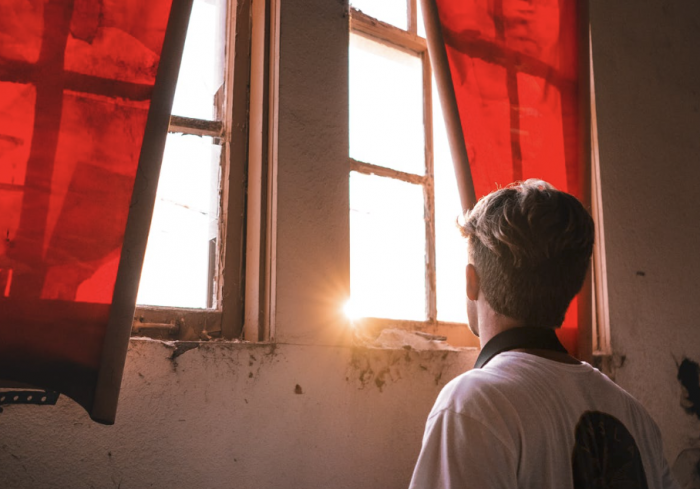The houses I once lived in are far away from where I call home now.
Too far to take a detour while out driving with time on my hands.
I can’t pause outside them, motor idling, seeing if the owners painted the fence or added a room. There’s one house nestled far back behind trees so that with the end of summer, leaves crisped in hot winds, gusting into windows like birds who fly into their reflection.
There was a second family home, driveway crumbling with old grey concrete. Then there’s that share house which used to echo with the thud of badly played bass guitar. Another house where, out the front, you could stand under trees dripping with rain, turning your mouth up to taste coastal salt that’d settled on leaves.
Twenty-something years ago, I’d returned to the city I was born in and stayed close enough to borrow a car and drive out to where I’d lived with my grandparents.
The house stood silently behind knee-high grass. I could still make out the outline of garden beds. The way mosaics are sometimes unearthed around houses or buildings. I had a memory of following my grandfather as he held a hose onto plants, a thumb over the end to soften the jet of water.
As I gazed toward the house, its silence reminded me of the quiet that moved through the rooms, heavy as humidity. There was also the sound of sulking following arguments and the jangling of a hurled saucepan lid clanging off a wall.
As an eight-year-old I’d retreated into the vast backyard after the arguments, lingering in the damp corners under a pine tree or inside a collapsing shed with its rows of rusted, mysterious tools. There was no escaping those rages. Their sound swelled down hallways, buffeted against windows, layered over walls the way condensation does.
The backyard was filled with pathways. Some weaved by under a lemon tree populated with brown bugs spitting acid when disturbed. Past trails of laden tomato plants, looping and climbing over a trellis. Then past a massive pine tree that my grandfather told me people used to camp under before his house was built. To prove it, he dug up brittle oyster shells discarded from meals of decades ago.
The next time I visited was on Google Maps. One house I’d lived in was so entirely behind trees it’d become invisible. My share house then appeared, painted and renovated, probably now worth three years of salary plus long hours and stressful work to pay it off.
My grandparent’s house had vanished. From the distant aerial picture lay a square of brown soil where it used to be. Earthmoving vehicles now lined up on the site.
Opposite was still the house where my first best friend lived, where he stood for me to shout to him across the road I wasn’t allowed to cross.
But the house I’d lived in was gone. Not a sign of foundations or the giant trees my grandfather nurtured over time. What happened to everything inside that house? The handful of coins taken from the pocket of a dead German soldier during the battle of the Somme? The army uniform hanging in a wardrobe, absorbing dust, perspiration, and fear. It’d witnessed men bayoneted, bare trees without birds, a flush of red poppies growing through the mud in France, and terrified donkeys braying in fear while dragging ammunition carts.
Where were the hoarded, old newspapers reporting on the beginning of wars, assassinations, and earthquakes? The same newspapers that knew nothing of climate change and COVID-19.
What about the towering and graceful Magnolia trees, plus the slow buzz inside the white boxes of beehives? Was my crying still haunting those spaces, alongside the footprints of a pet dog that eventually ran off along the tilting back fence? I often thought my grandfather carried with him through life the dull thump of artillery and the shrilling voices of our family at war.
I still walk those pathways in my mind. They are, of course, razed now.
Perhaps they’d be revealed underground by a satellite photograph, earth well-trodden, years of size five shoe imprints, and then size seven layering over the top of those as I grew. There might be prints from when I slipped my feet into my grandfather’s boots and walked those trails.
There could be bottle tops I collected, scattered, and buried. Maybe there’d be the slight outline of a broom I accidentally snapped before digging a hole in soft earth to hide the evidence.
I continue to walk these tracks, but as the last person left who knows them, I am alone each time.
I can’t take anyone else down their meanderings as they don’t exist anymore. Except to me, so that I still feel the wet clay under my feet, the crumbly eroded edges, and the yearnings that one day I’d leave that place.
~











Read 4 comments and reply